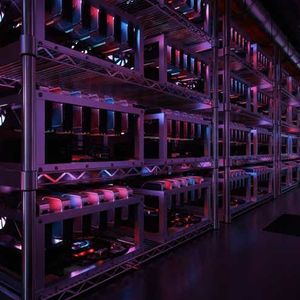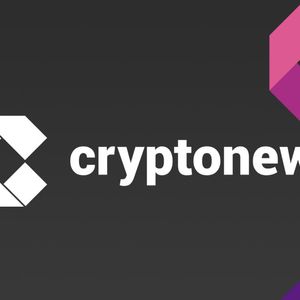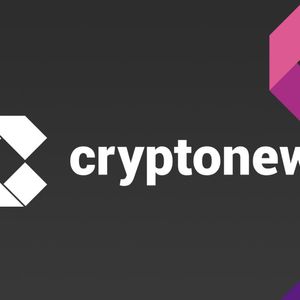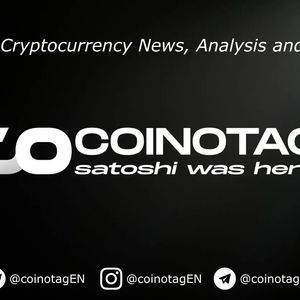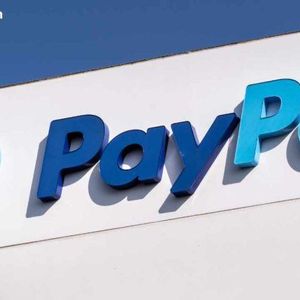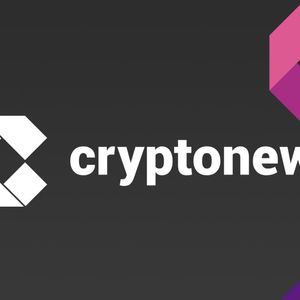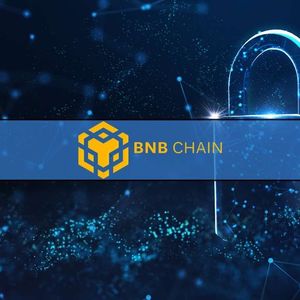Summary Hut 8 is undervalued compared to other Bitcoin miners. It holds substantial BTC reserves and has very low mining costs. The company’s strategic focus on high-performance computing (HPC) and AI could lead to higher revenue per watt and enhanced operational efficiencies. When comparing it to incumbent data center REITs based on capacity, we can see a large value discrepancy indicating Hut 8 trades at a severe discount. The margin of safety is huge. Hut 8 ( HUT ) is a Bitcoin miner. It operates up to 762 MW of data centers which are currently used for Bitcoin mining. The bullish thesis is simple: HUT has the best chance of transforming a non-trivial amount of capacity into AI data centers, which would make HUT trade at a substantial discount when compared to incumbent data center REITs. A Steal Within The Mining Space First of all, before talking about the bull thesis, let's consider HUT within the context of other Bitcoin miners. Its market cap is only twice the value of the BTC it holds in reserves, which is the lowest on the market for miners. Basically, every single company that has a Bitcoin treasury has a higher “market cap to BTC reserves” ratio. The fact that for every dollar of HUT shares, you are getting ~57 cents of BTC is a pretty good deal considering that this number for other miners like CleanSpark and MARA are in the 15 to 30 cent range. The chart below is from BitcoinTreasuries.net , which aggregates BTC treasuries based on public info. The second column from the right shows the value of the BTC held as a percent of market cap. I have marked the miners in red. Bitcoin Treasuries (Bitcointreasuries.net) Second, HUT’s cost to mine bitcoins is extremely low compared to most miners. You can back out the cost to mine by looking at how much bitcoins were mined in a quarter and then dividing it by the all-in operational costs as expressed in a quarterly statement. HUT also has a slide for this in their presentation from May , but this uses pre-Halving numbers. Miners all report their stuff a little differently, so it is very tedious to get everyone’s cost per BTC mined to do an apples-to-apples comparison. Here’s how we can get a quick estimate for where HUT stands in the lineup of miners. TeraWulf’s ( WULF ) Q2 presentation has this slide which shows gross profit margins. I’m going to assume that the other miners on this slide— CleanSpark (CLSK), MARA (MARA), Riot (RIOT), Core Scientific ( CORZ ) —have slightly higher cost per BTC, since their gross margins are lower. WULF Comps (TeraWulf) Later on, TeraWulf states a cost of $41587 per BTC. WULF Cost Per BTC (TeraWulf) Also, Bitfarms ( BITF ) states in their Q2 report that they have a $47300 cost per BTC: BITF Earnings (Bitfarms) Meanwhile, HUT is reporting a cost to mine of $26232, which is substantially lower than all of these other miners. HUT Earnings Q2 2024 (Hut 8) Just by these numbers alone, I think HUT is a very compelling investment in the mining space. It clearly has the ability to grow BTC per share and it is the miner trading at the lowest premium to its respective BTC reserves. When thinking about miners, it's always helpful to look back at the points I've established in this article about mining in general . Mining is a tough business because no other industry is as perfectly competitive as mining is. Basic economics tells us that a perfectly competitive industry contains firms with zero economic profits. This means that large scale miners will inevitably suffer from diseconomies of scale because the overhead of publicly traded compliance will eat into already razor-thin margins. So does this mean that publicly traded Bitcoin miners are immediately bad investments? No! What it means is that you have to look for miners that are doing things outside of simply mining BTC. For many miners, this outside action is diversifying into high performance computing. You see, some miners are acquiring Nvidia H100 GPU clusters for AI along with SHA-256 ASICs for Bitcoin mining. They are taking the energy capacity they have already established for ASICs and diverting some of this power to HPC and AI, which has a much higher revenue per watt of power consumed (read: higher gross margins). As it turns out, HUT is very well positioned to transition into HPC and AI. AI Upside Transitioning from a Bitcoin mining operation to an HPC operation is not simple. While mining is famous for handling flexible loads, HPC cannot be curtailed. Imagine if your computer was making a computation and was suddenly shut down: all the progress would be lost and you’d have to restart from the beginning. So at the energy infrastructure level, there are certain requirements that differ between HPC data centers and mining data centers. HUT has known this for a long time. In the most recent earnings call , CEO Asher Genoot called it their “power first thesis,” where HUT approaches the issue of site procurement and development with the intent of building for a multitude of use cases. Here’s what he had to say about deploying a new 205 MW site: With that said, we are currently in discussions for a large scale partnership for our site in the Texas Panhandle, which can power up to 205 megawatts of Nvidia Blackwell GPUs, or up to 16.5 exahash of next-generation ASIC miners. With engineering, procurement and construction efforts underway, we anticipate energizing the site in the first half of next year. Stay tuned for more. When later asked about Texas Panhandle, he said: And so that site today, we're having conversations with customers about a HPC AI build, but we're also having discussions with them about other sites in our pipeline which may be more interesting from them -- from a -- kind of fiber connectivity standpoint, that's a little less rural. And so, we're having active discussions in the multi 100 megawatt size in regards to AI expansion, and looking at both, our current fleet and also our expansion pipeline. Another interesting quote from the call: It became increasingly evident that incumbent data center operators and developers do not have sufficient infrastructure nor resources to meet the power capacity required to facilitate the advancement of AI. More importantly, they are not well equipped to provide what hyperscalers demand, timely access to multi 100 megawatts worth of long-term reliable low cost power. I believe that Hut 8, however, is uniquely positioned to solve this critical challenge. The $150 million investment from Coatue is also a signal that HUT has been thoroughly vetted for their ability to transition into AI data centers. Let’s do some napkin math. Currently HUT has at least 762 MW of capacity used for mining. They also have an additional 36,000 sq ft for HPC. HUT Platform (Hut8) We heard about Texas Panhandle being 205 MW. And we heard about a few more “multi 100 megawatts.” Let’s assume this is 400 MW energized for HPC by the end of 2025. HUT’s market cap is $920 million. As I write this, the price is $9.09 per share. Digital Realty ( DLR ) is probably the most well-known data center REIT. Unlike HUT, DLR doesn’t even own much of the machines it hosts: it only owns the power and real estate infrastructure that the machines are using. DLR has 2500 MW in place and over 3000 MW of buildable capacity. It has a market cap of $50.6 billion. The market cap per MW for HUT’s HPC-only capacity after everything is built is $2.3 million per MW— divide 920 million by 400. The market cap per MW for DLR after everything is built is $9.2 million per MW— divide 50.6 billion by the sum of 5500. So $2.3 per watt versus $9.2 per watt. That is some big value dislocation. Now consider that over 50% of HUT’s market cap is actually just BTC. And also consider that there is another 700 MW that HUT is using for mining BTC at very low costs per BTC. Some of this capacity can likely be used to support AI too. This is an option that HUT holds. Lastly, consider that global liquidity is rising, which has always dramatically pushed up the value of BTC. The base case for AI is simply that HUT is a data center REIT disguised as a Bitcoin miner that is getting ready to decisively capitalize on some very intelligent capex. It also has a lot of dry powder to make it happen: over $500 million of BTC and $150 million of cash from Coatue. Once more people start catching on to the economic reality of the situation, the upside is literally massive. Risks The core risk to this thesis is that the move to HPC fails for various reasons. The premise here rests on the undervaluation of HUT relative to data center REITs on a “market cap to useful capacity” basis. There could be operational failures which lead to these endeavors being ultimately value destructive. In this case, it would have been far better for HUT to stick with mining at low costs. Another way this AI thesis could fail is if AI itself falls out of favor. I think while AI tools are cool, it remains to be seen how it can really be used in very specialized settings. Maybe training LLMs on custom data sets is the answer, but then again maybe we are all too early and the market has gotten ahead of itself. In this case, such AI-themed capex might not generate a return soon enough to be justifiable. Given that a miner like CORZ has successfully closed on HPC deals, I don’t think HUT is that far behind from monetizing their HPC investments after the infrastructure has been built and the machines have been energized. Another risk would be in the BTC price. If BTC falls, then that will adversely impact what is responsible for 57% of HUT’s market cap. At this point, HUT is economically a leveraged version of BTC. The first avenue for being a leveraged BTC play is its leveraged capital structure plus a large amount of BTC holdings. This is akin to borrowing money to buy BTC. The second avenue is that HUT derives a good portion of revenue (at least for now while HPC segments are being developed) directly from mining. This is akin to a call option on BTC where the strike price is the cost per BTC. The final risk I’ll mention is actually in the network hashrate increasing far faster than anyone has expected. This is possible, but improbable. Hashrate increases point to more competitiveness in the mining industry. More hashrate coming online dilutes the value of existing hashrate, so such a risk could see the cost per BTC rise. Given that HUT’s cost per BTC is quite low compared to other miners, I think at the very least it would be less hurt than the other miners if this risk were to materialize. Conclusion Overall, I rate HUT a Strong Buy. It is clearly a very undervalued miner given its enormous BTC treasury and low cost to mine. This offers a substantial margin of safety. The HPC conversion makes for a very favorable special situation and deep value play. HUT is a miner, but it is really also a data center REIT that no one is calling a REIT yet. It has many operational efficiencies which incumbent data centers don’t even have, which adds to its competitiveness. I am hopeful that HUT’s AI vertical will eventually generate revenues to pay off all power costs, so that the company can hold nearly all the BTC it mines. This could justify a much higher price: possibly over 4x the BTC holdings, as is the case for miners like CLSK and BITF.


